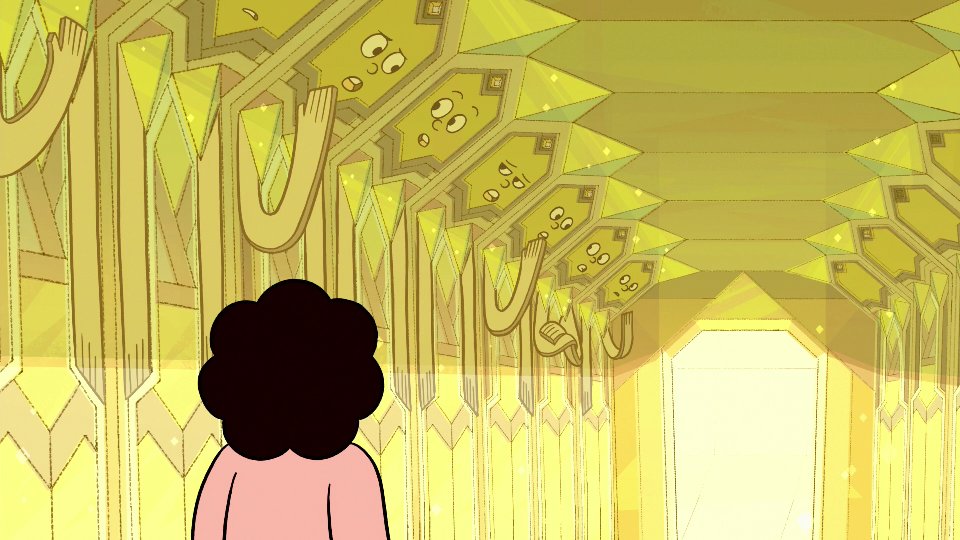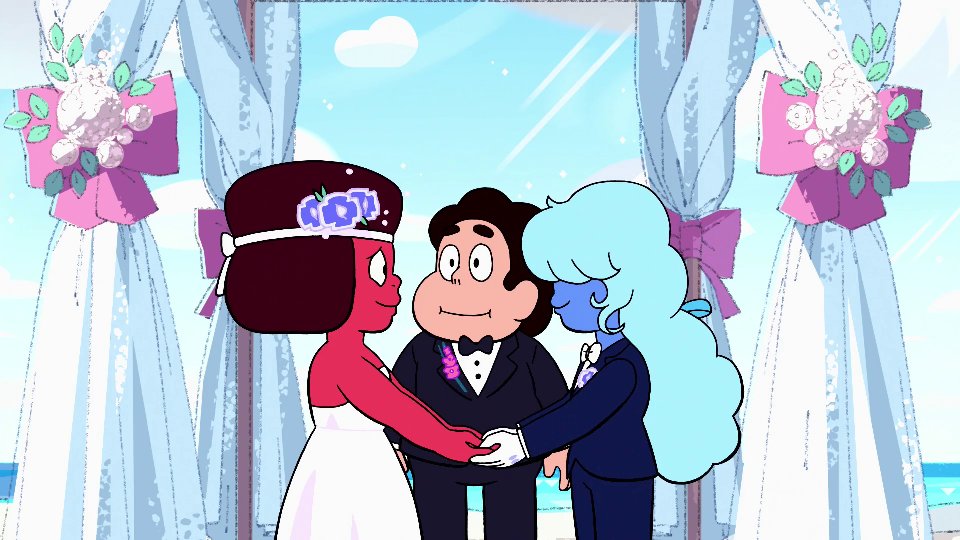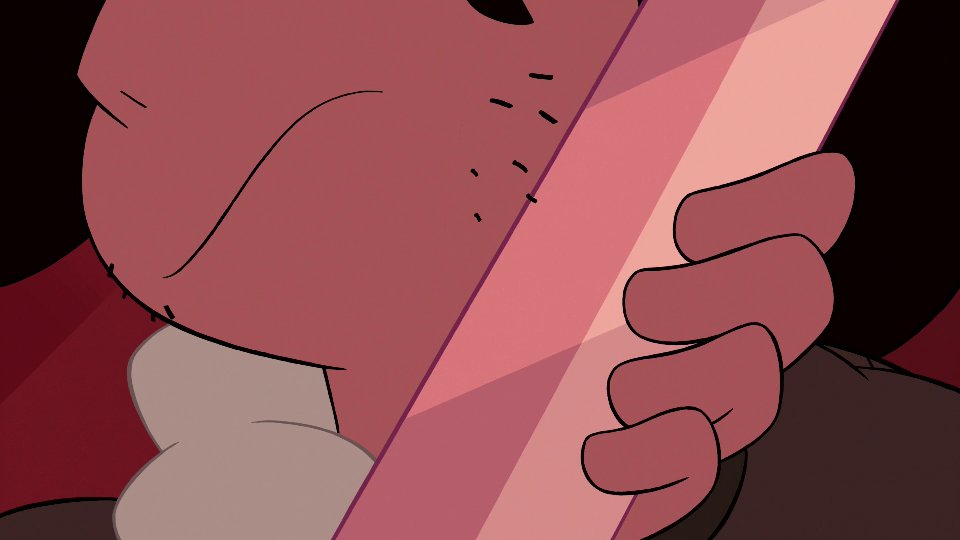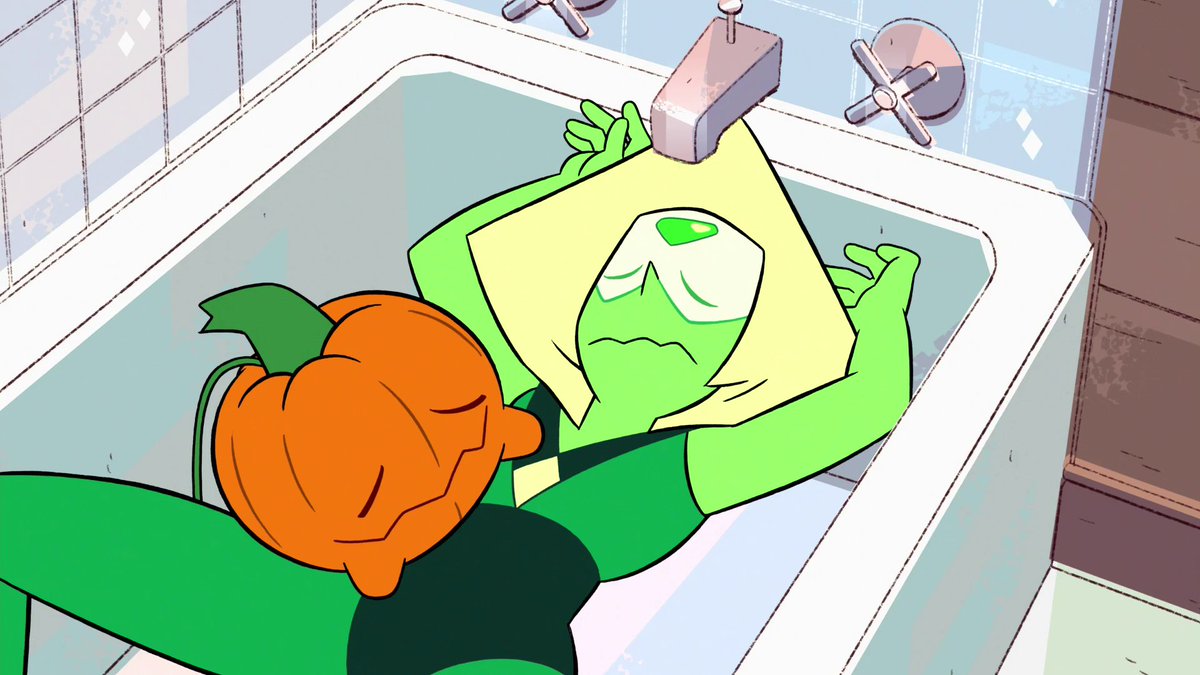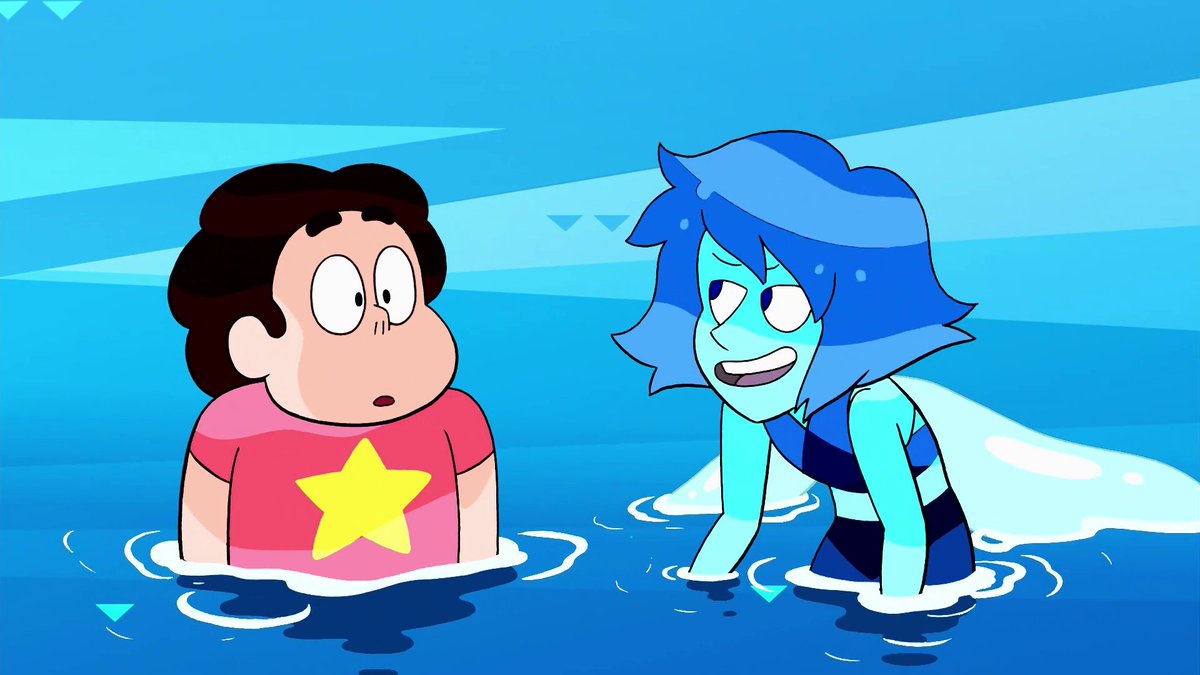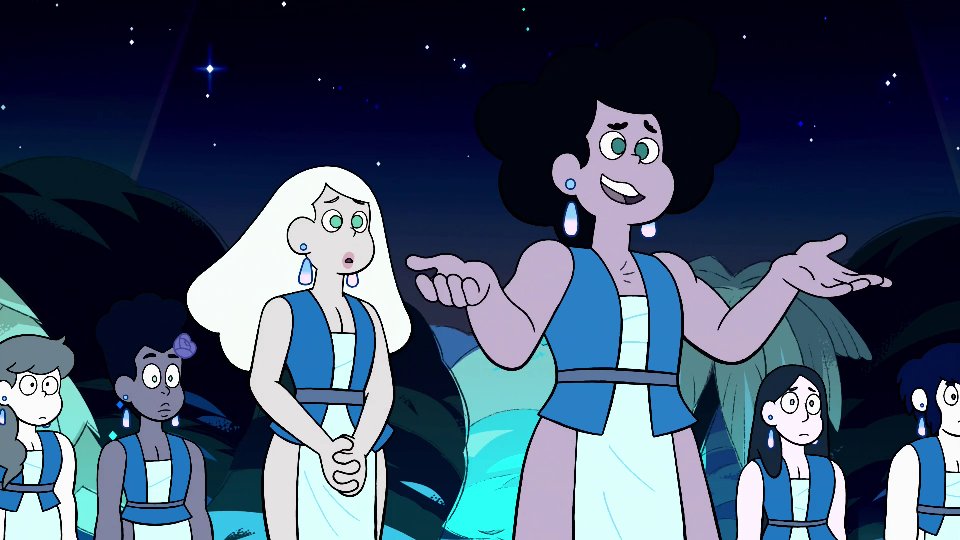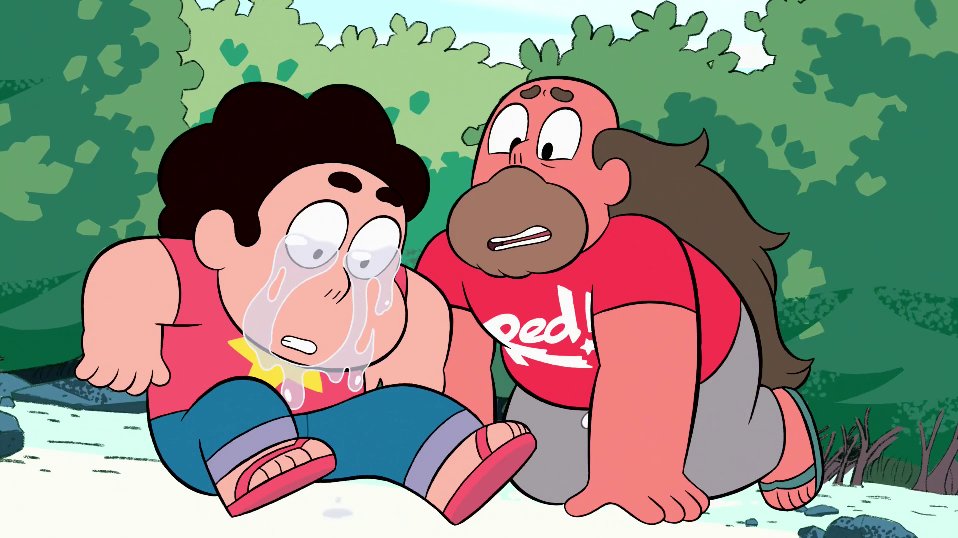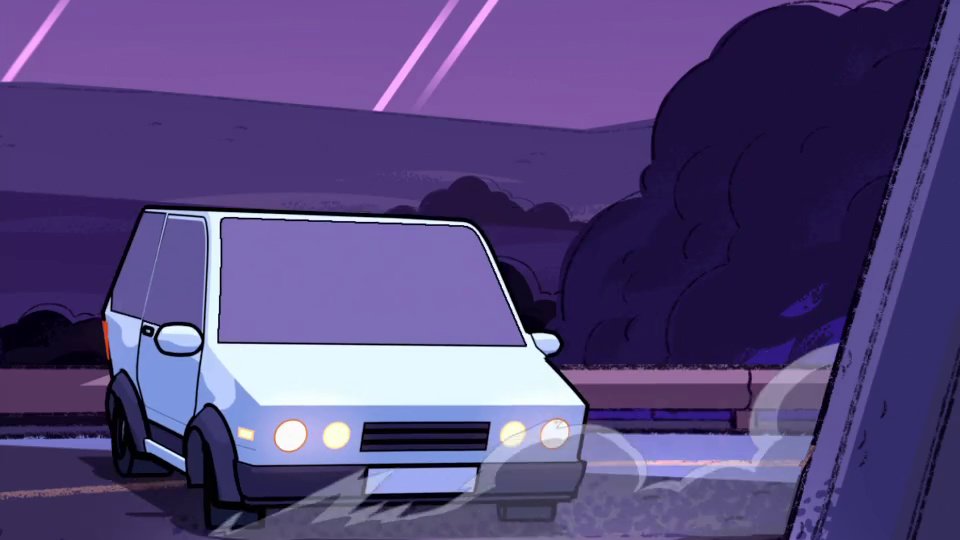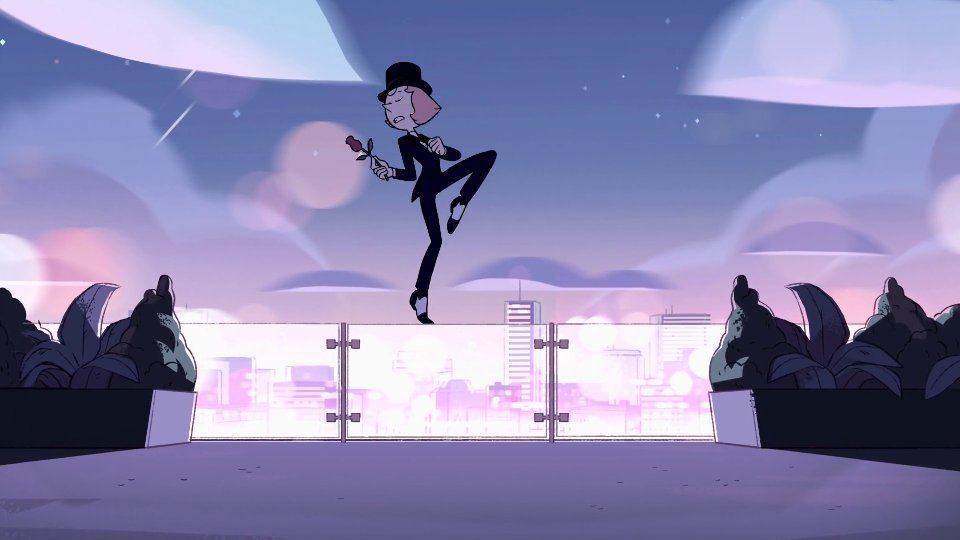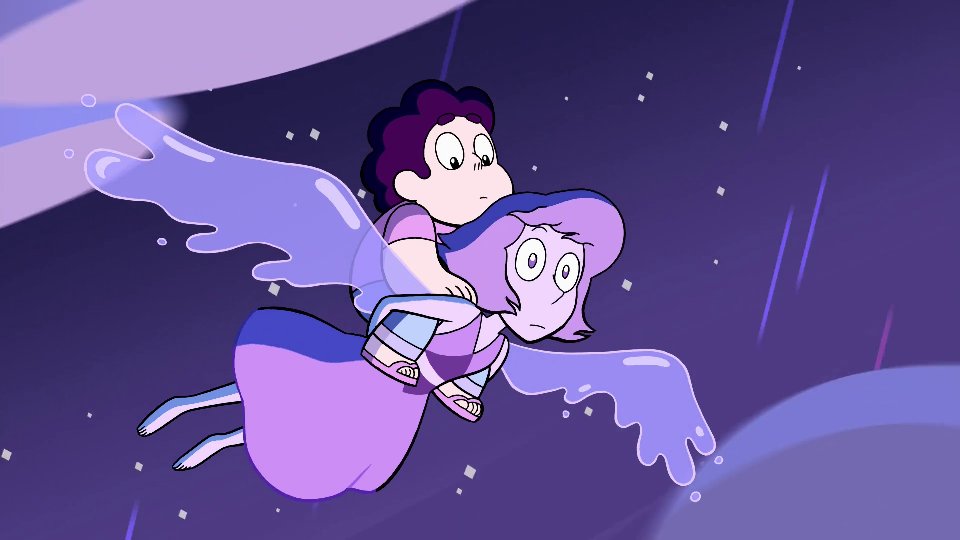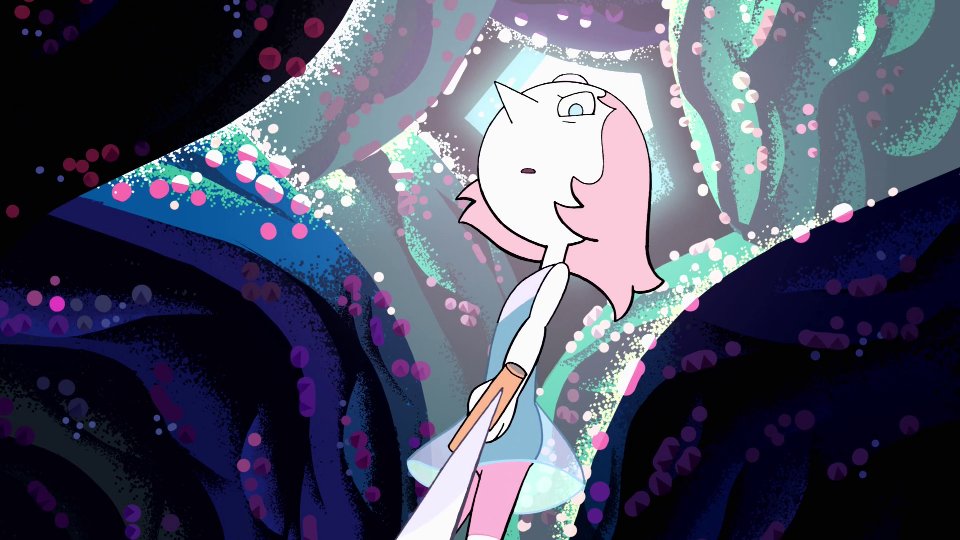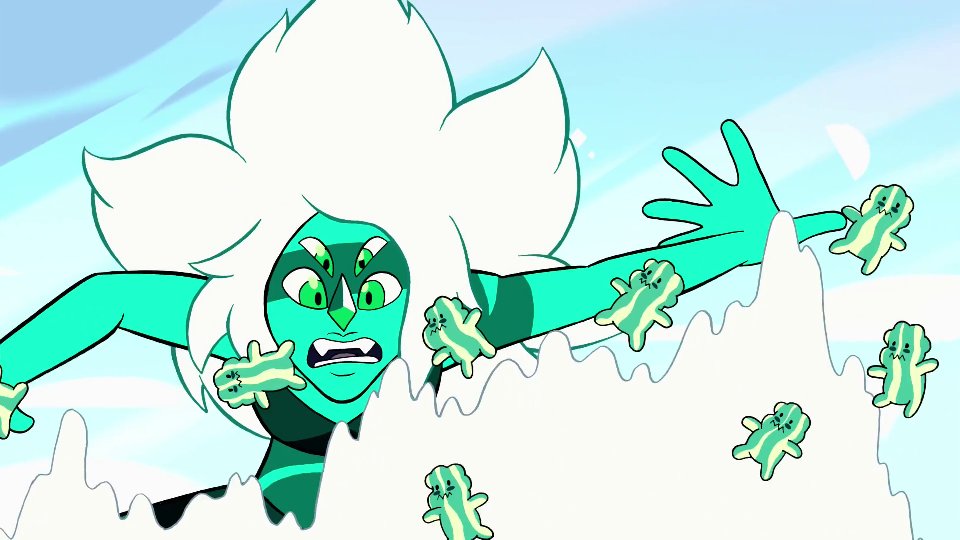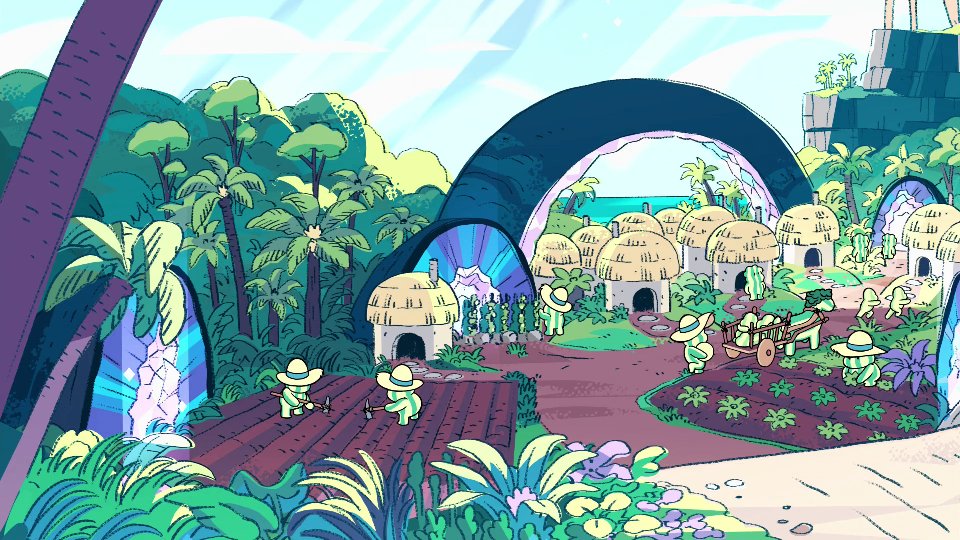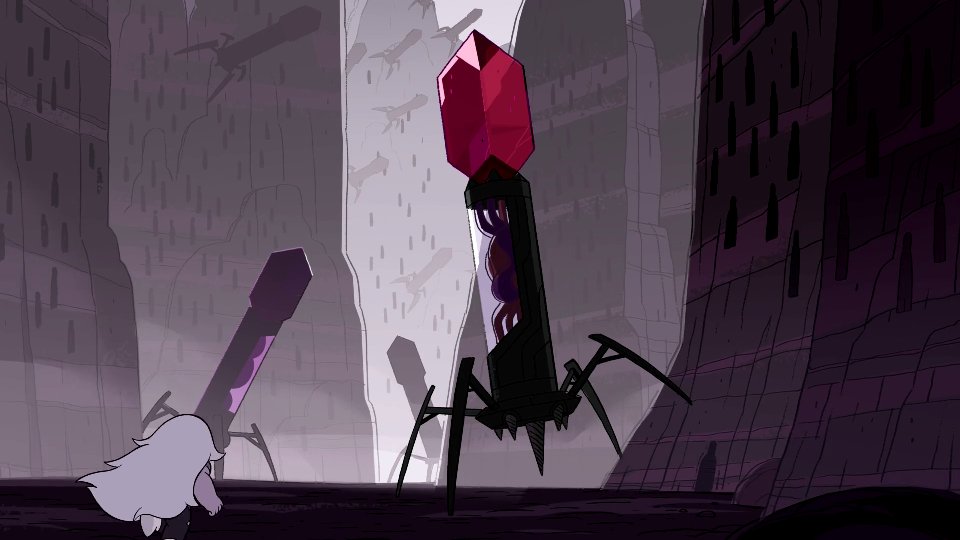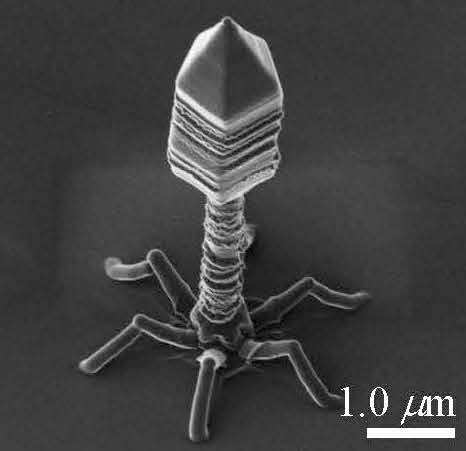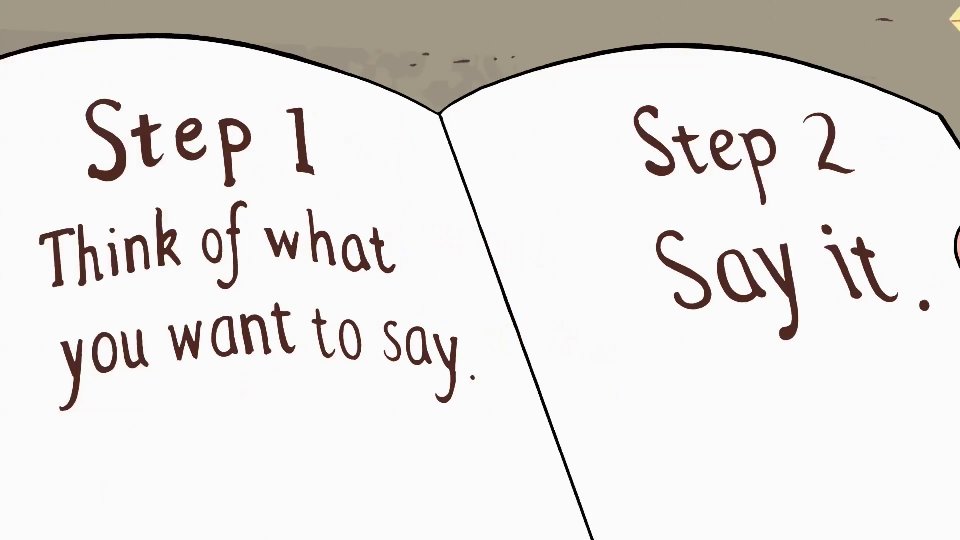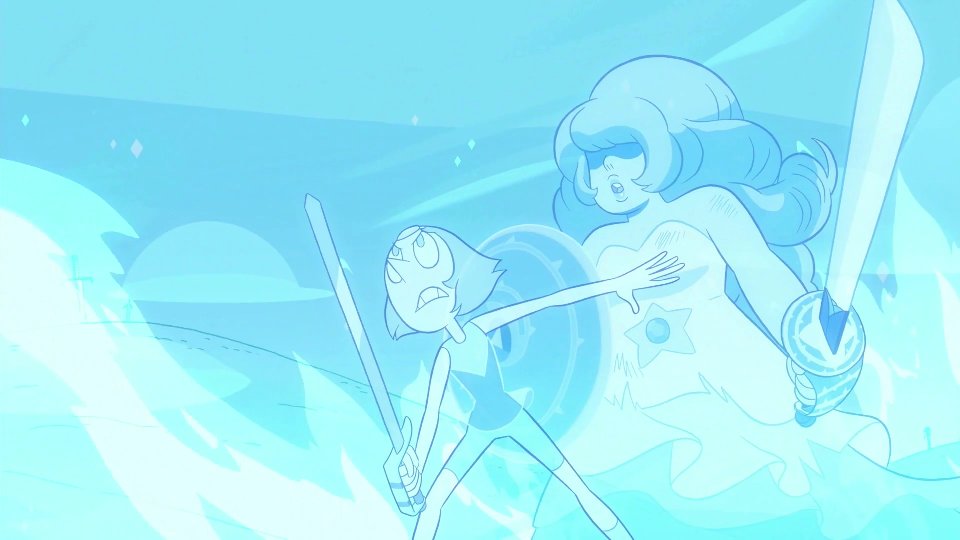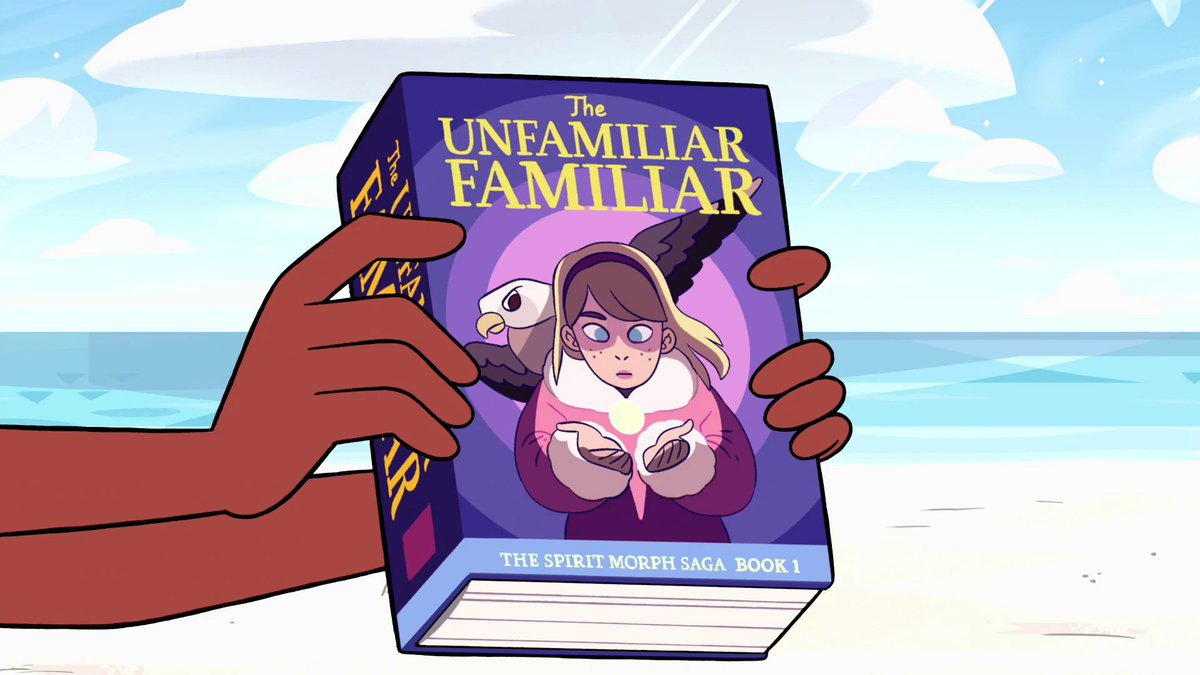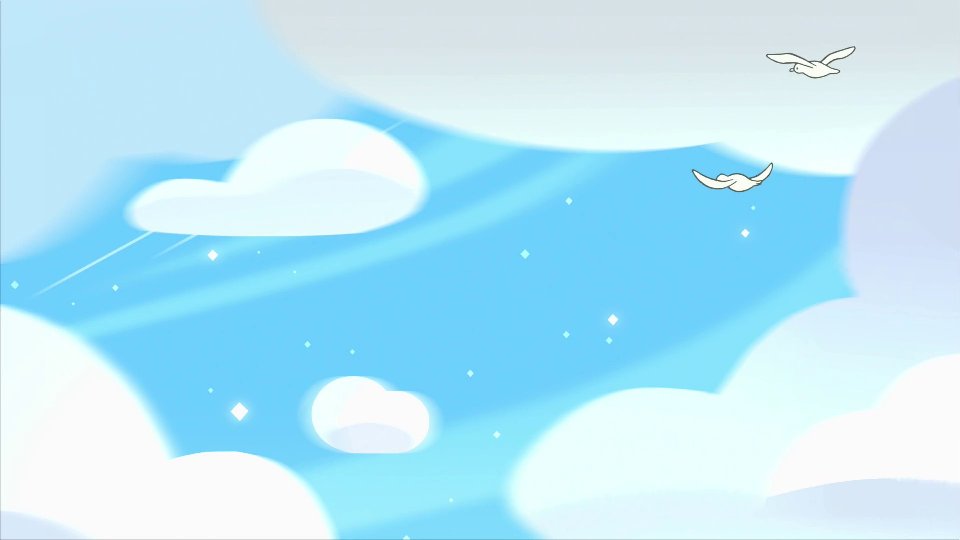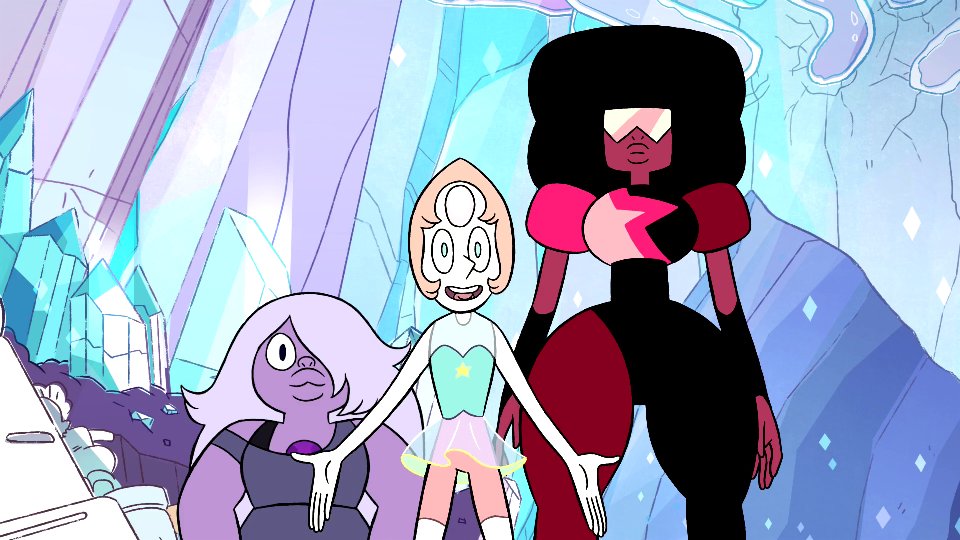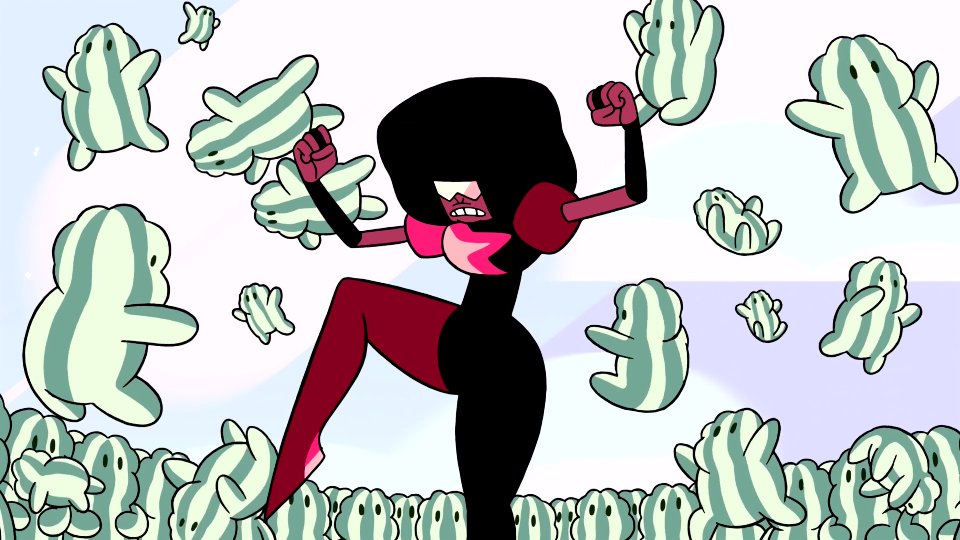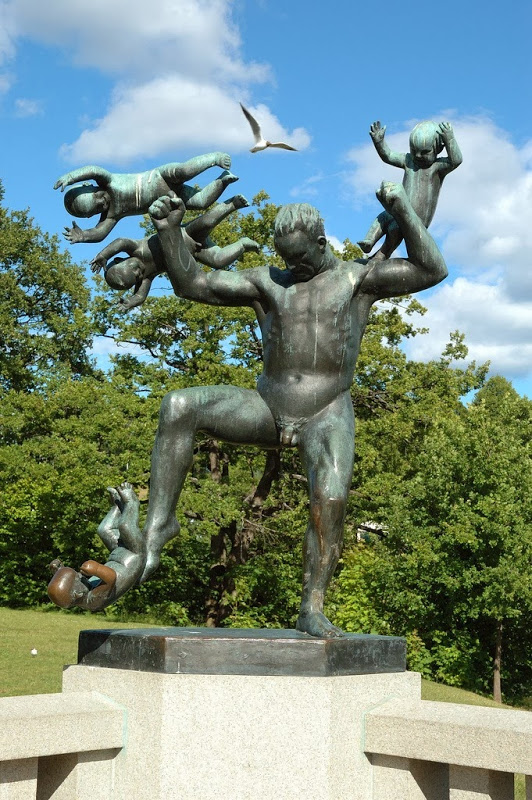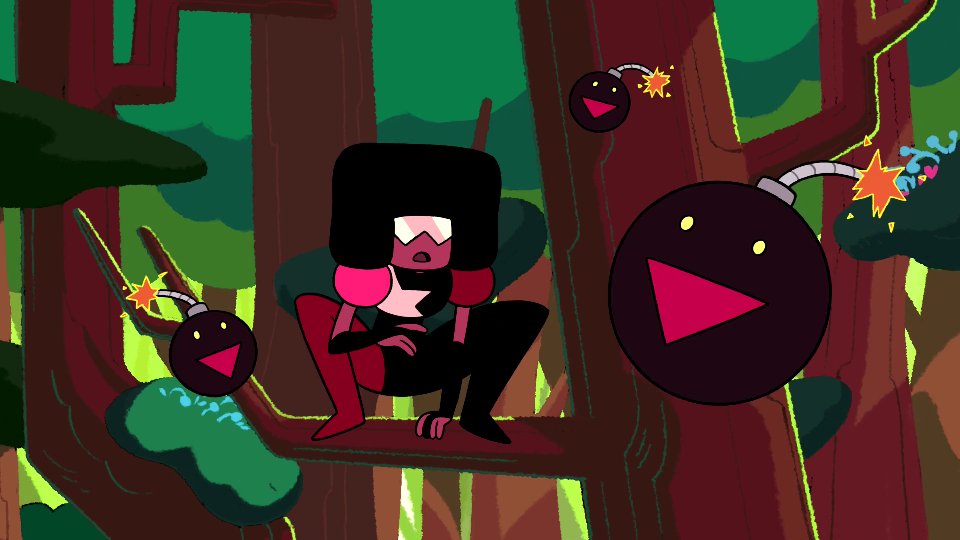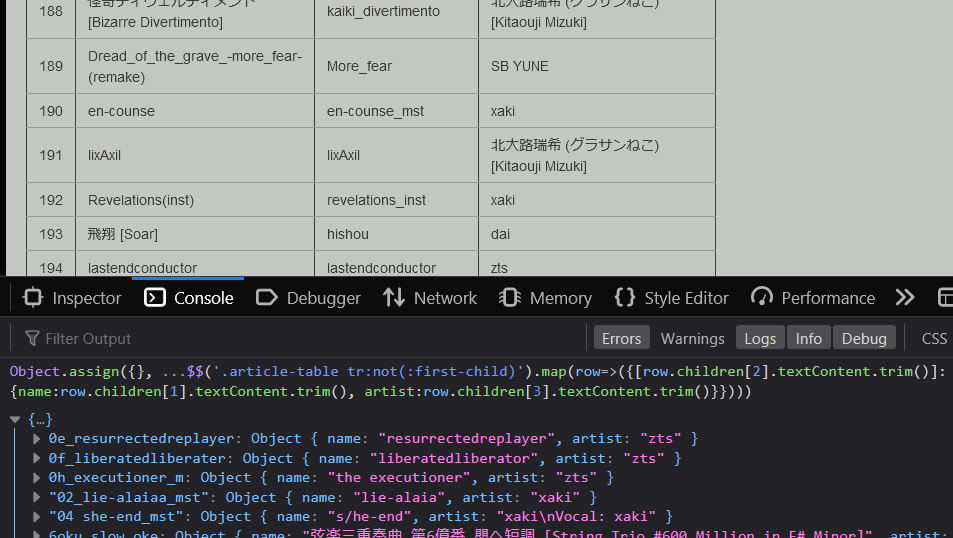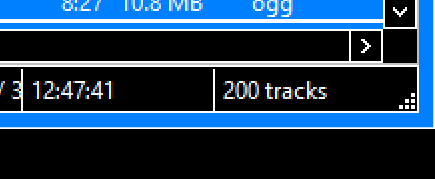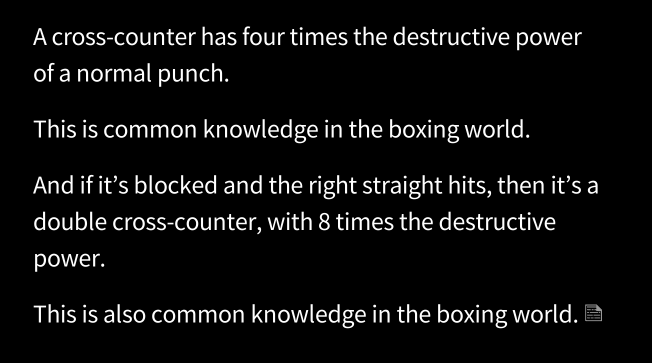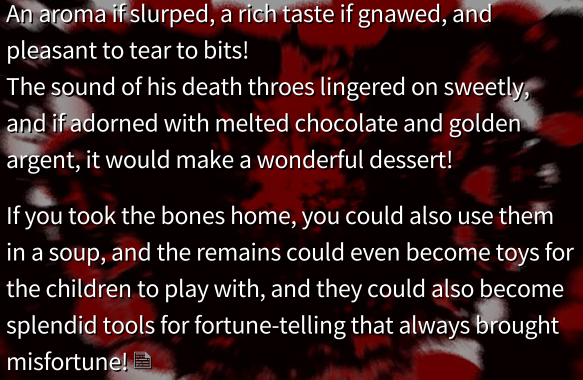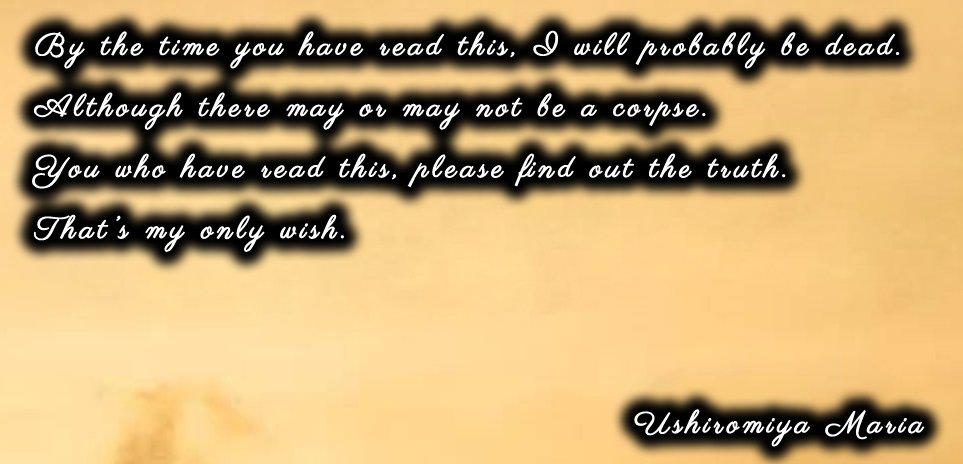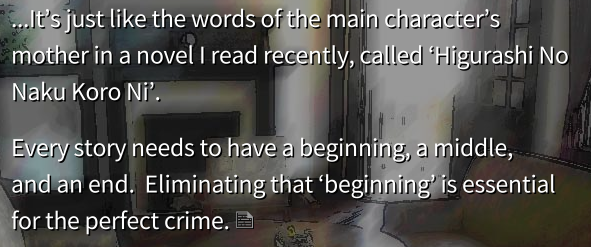Touhou fanslators are a united community, capable of agreeing on everything except how much of an accent to give Marisa.
This is an appreciation post exclusively for Steven Universe's warp pad sound effect. You hear this roughly every three episodes and is a major presence in the show's audio identity. Crisp as the hiss of a soda can. I love this baby THX noise.
There's many features I've always loved about this series. I love grand ornate plot twists; I love characters discovering astonishing powers in themselves and their friends; I love the strange and unique things gem fusion was used for. It's always been special to me.
Now, though, it's receded into the past, and I got to enjoy it uninterrupted - not detached from its historical and social context, but distanced, so that it isn't drowned out by it. It's something I'd wanted for a long time.
I'm very glad I watched this series now… when it aired, it was so popular and intensely scrutinised that it felt impossible to just have a personal relationship to it… so many people needed it to be so many things. (Not that it didn't actively try to be many of those things.)
If season 5 really was close to being the end of the series (a burden it's very underqualified for), then the existence of Future is a godsend.
I can't believe people had to wait eight months for this after 5-28 aired. Holy cannoli.
You may wonder what I think of The Movie preceding it. I'll admit that The Movie is rather underwhelming on its own, but as a weirdly-paced introductory "episode 0" of Future, it's honestly not bad, and reinforces one of its major themes (…that it's all That Character's fault).
I feel like it truly completes this series, by returning to what it always enjoyed most - big emotional character moments - while giving meaning to the whole journey of the prior 5 seasons: showing the world it created, wrestling with the truths it revealed.
Like, sure, maaaaybe F-2 is rather weak. But the rest are good and several are truly great. F-3? Great! F-4? Great! F-13? Nerve-wracking but also great. F-15? Great! F-16? Simply unbelievable. Even F-19 is good despite the narrative pressure it's under.
OK, here's my reasoned, uncompromising review of season 6 of 6, "Steven Universe Future".
Ahem.
Steven Universe Future
FFFFFREAKING RULESSSSS!!!!!
On another note, I like the last moment with Sadie and Lars in 5-28. If their whole purpose across five seasons was this scene, with both of them in zany costumes and coloured hair, embarrassed to admit how much better they became without each other, then I'd say it was worth it.
This is why, even this deep into the series, there's things like the run of 5-19 to 5-23 that's mostly dedicated to two characters' relationship, or episodes like 5-6 and 5-17 that are just about one character's internal conflict.
I feel like this comparison is a little misleading, though, since this series seems less interested in being specifically a heroic fantasy story than just being a vehicle for general coming-of-age character development and big emotional moments.
It's really tempting to compare this series unfavourably to ATLA, which has a similar child hero and invading empire conflict, and which thinks about what it means for an invading empire to be "defeated" by a child hero, significantly more than this does.
I'm going to be benevolent and hypothesise that the suboptimal pacing in this part of the series is due to uncertainty about whether or when the show was going to be cancelled. I think OK KO was cancelled around this time, too.
It's not to say that the plot of this run doesn't make a basic kind of sense – given how much of it hinges on Steven having a certain special kind of leverage over the villains that didn't exist until mid-season – but that it's ultimately a bit undersold.
White Diamond feels like a character that was originally meant to have gotten a season to herself as antagonist, rather than just the equivalent of 7 episodes. The run from 5-24 to 5-28 feels like it could've been a season in itself.
I can't help but keep thinking about the frequently suggested home life of the series's monarchical villain characters. These Fantastic Planet fiends having their petty feuds in the pristine hallways of Space Anor Londo. I love every tiny glimpse of it.
5-25… The deepest reaches of enemy territory are a little architecturally simple for my tastes, but I love these unexplained living structures, which I assume are references to something old, sinister and not Adventure Time (where they would otherwise be tonally unremarkable).
I notice in the above picture that, contrary to either character's normal designs, they put the butch in a dress and the femme in a tux, to ensure this moment was maximally legible as a queer couple to small children and stubborn adults.
I've seen interviews about how one of Rebecca Sugar's long-term goals for this series, as it was designed in 2013, was to build enough narrative leverage to justify putting this scene (below, from 5-23) onscreen, and that season 5 (2018) was the earliest it had become permitted.
5-19 is exactly what I'd hoped would follow up 5-18. Plot twists just aren't complete until the characters fully comprehend their enormity, right?
Also observing that this puts Sapphire and Ruby in a conflict opposite that of 2-15, showing both are capable of righteous anger.
Watched 5-18 for the first time………… MMMMMMM!! MWAH! DELICIOUS!!!
I mean, sure, I admit it has rather disappointing ramifications for the message of 3-24, but the DELIVERY! The SLOW ROLL!
I like 5-9 and 5-14… feels like they're taking the side of Sadie shown in 2-20 and revealing the other half.
*STARTS HOWLING AND SCREECHING AND THROWING BARRELS LIKE DONKEY KONG*
It's been 3 years since I saw 5-4, so I was a little disturbed to find its events were left unresolved for an additional 6 episodes. But, the fate of Lars revealed in 5-11 turned out to be EXTREMELY hilarious, and retroactively miraculously made the wait worth it.
When I watched 5-4, I suddenly began to understand Lars as roughly the same kind of weak-willed, easily-swayed male character as Blouse in Rebecca Sugar's comic Pug Davis, and that he'd always been meant as an object of pity and vulnerability rather than anything else.
Also… since the first scene of 1-1, Sadie and Lars have been this uncompelling duo that have gotten a bizarre amount of screen time with no apparent result. This arc plunging Lars deeply into fantasy, forcing him into heroics, felt like the payoff had finally emerged.
The twist in 5-4 simply captivated me at the time, how it took a backgrounded ongoing mystery and deepened its meaning without fully demystifying it. I still greatly respect it.
(Reminder that this is the last episode I'd seen as it aired, and here on is new territory for me.)
The designs of "the Off-Colors" in 5-3 and 5-4 are good, perhaps excepting the one-note Padparadscha. Fluorite in particular really exemplifies the notion of space being this series's realm of wondrous fantasy.
I'm reminded again how much I was impressed by the new hostile gems in 4-23 to 5-1, especially the Topaz duo. Truly, gem fusion goes in so many directions in this series. No stone, pun intended, is unturned.
On an unrelated note… I can't believe people ever complained of the characters being "off-model" in multiple episodes. The gall. What a choice of cartoon to make this complaint about.
I've noticed in some episodes that a combination of certain high-hue colours (such as the cyans below), and really crisp black lines, causes the cartoon to sometimes appear like a professionally animated MS Paint image, and all I have to say is…… I love it!!!!!
4-19 kind of boils down to a single dark joke, but that joke is pretty good at instilling a feeling of unease and encroaching hostility as the season draws to a close.
4-16 feels like the central pillar of season 4 – it delves into the emotional repercussions of season 3's ending twist (previously felt in 4-4), and sets up the climactic moment of 4-24.
It says something about the show's introspective tone at this point that 4-16, the first real wind-down episode after that arc, has about 80 consecutive seconds of puttering around the house in silence, all of which feels very meaningful.
On the subject of music: I'm trying to pay closer attention to the background music this time around, and I like it a good deal. My favourite character-related instruments are the… triangle wave? for the Diamond characters, and the reversed piano often used around Lapis Lazuli.
4-14: The villains singing a sombre little song while the protagonists are frantically hiding from them in the same room? Great. Stupendous. End tweet.
Little detail in 4-13 I didn't pick up the first time: all of these humans have identical clothing which isn't gendered.
4-11 is kind of the weirdly-paced filler episode that has to advance the plot in a way that can't really fill 11 minutes by itself (similar to 1-46). 4-13 sucessfully weaves around a bunch of bad tropes to portray its little world surprisingly nonjudgmentally.
OK. The arc from 4-10 to 4-14? As great as I remember. A new skirmish into the enemy's realm, the first since 1-49, with many more hostile characters in close proximity, works great as a prelude to this series's finale (even if the two premises overlap somewhat uncomfortably).
I did remember 4-7, though, for continuing the sympathetic development of Onion from 2-16. It's not quite as good as that one, but it feels like it completes this minor character in a way unlike most of the others.
I'd forgotten entirely about 4-6, but it's such a good episode. Pearl is developed from the events of 3-8 and is an even balance of flustered and suave. Steven, on his trajectory toward maturity, is the canniest character in the room.
4-4 (depicted below) has a song ("Here Comes a Thought") that I've gotten much more into on this revisit. Lyrically it's a little clunky, but melodically it's really great. *you immediately perfectly remember the song now, conveniently saving me from having to link it*
4-3 could've bitten much harder, but the notion of a colonial explorer character realising all his discovered ruins belong to the Gems, and not to him, is in the correct direction (and is a more interesting continuation of themes from 2-17).
Gem fusion designs are very loose, but size adheres to roughly quadratic increases: a fusion of 3 gems is usually between double and triple the size of a fusion of 2. This is used to explain why The Cluster, a "gem" the width of a stadium, could have a body larger than Earth.
Having initially decided that most gem fusions are flashy treats to be used sparingly, the show leans into this scarcity by giving them intense or overwhelming personalities, which works well in making you both pleased by and exhausted by them in each appearance.
Season 3 is very solid – to me, the weakest episode is probably 3-13, which is roughly equivalent to an average S1 episode. (I have withheld judgment of 3-20 until after this is all over.) S4 has at least two that are weaker than either of these (but maybe has higher highs).
3-22 rounds out Jasper's arc (for now) pretty well, and 3-23 and 3-24 work well in letting the twist from 3-22's ending slowly sink in. These all originally gave me great confidence that the series still had a lot of meaningful, character-affecting twists it could whip out.
Season 3 develops its ending conflict pretty nicely, with 3-15 and 3-17 reintroducing Jasper, 3-18 and 3-19 bringing Steven and Amethyst together (acknowledging that Steven is now her equal as a superhero), and 3-16 and 3-20 bringing up Rose Quartz in various lights.
Speaking of Community: you may recall it coined "six seasons and a movie" to describe the ideal level of success a beloved TV show deserves. This figure is meaninglessly arbitrary, but I admit I'm amused that Steven Universe received precisely six seasons and precisely one movie.
I do NOT remember what show or movie 3-12 is parodying, except that I remember the sitcom Community (a show I thought was funny but didn't actually like) also parodied it several years earlier, so I assume the actual reference was transitory enough that it's now entirely lost.
Watching these sequentially is letting me pick up a lot of ongoing details that don't really matter but which suggest world continuity, such as how Lapis Lazuli occasionally reprises the fart joke from 1-25, or how the seagulls are often portrayed as viciously homicidal.
I appreciate the ongoing joke that at least two Steven Universe episodes (3-11 and 4-6) are predicated on the infamous drifting prowess of a car that looks like a soap bar designed it.
Regarding songs in this series in general: I am glad that 90% of them are written by Rebecca Sugar. I recall I and many others regretted her leaving Adventure Time after writing hits like "Remember You", but her style is unique enough that it does deserve a show all to itself.
I thought it a bit on-the-nose that the big city is "Empire City", but then I (Australian) learned the word "Empire", far from just one 1930s skyscraper, has been associated with New York for over 200 years (https://en.wikipedia.org/wiki/Empire_State), so, I guess it's simply darkly accurate.
3-8, that is to say, THIS episode (points below while mouthing "fav if you agree") originally struck me as being early Simpsons-inspired, based on how many of those involved characters being briefly elevated to wealth and prestige. It's probably just Broadway-inspired, though.
3-6, one of the last episodes to use the S1 staple premise of "Steven losing control of a new power", might be my favourite among them. Steven being stuck in midair hundreds of feet above his house is such an elegantly minimalist approach to it.
The voice-actor for the Ruby gems does a pretty good job at balancing them between foolish and threatening. They really don't sound like anyone else in the show.
This is a post regarding Lapis Lazuli the water-themed gem's wings (below). I think they're great, excellent, not a terrible visual pun, and good. This is not, repeat, NOT because I played several Touhou games last month, reducing my wing standards to zero. That's a coincidence.
It's easy to see in retrospect that The Cluster's purpose is to be a common "enemy" that brings Peridot and the Gems together, despite appearing like a much grander threat - though it's nice that it additionally explains why Earth is currently beneath the villains' notice.
Flashbacks in this series have varying levels of art abstraction based on how long they are and what form the flashback takes in the present. This one (spanning most of 2-25) uses vaguely 1940s-esque background colours and shades to signify that it's told as a bedtime story.
Of course, what really sweetened it for me was unexpectedly introducing this strange setting and then immediately using it (without destroying it - as in, using it with sincerity) for a climactic end-of-season battle (that was pushed into season 3 somehow).
After the more tonally grounded (more or less) episodes of season 2, I liked the unexpected Adventure Time-esque watermelon village Steven visits in dreams in 3-1, made from prior S1 elements (the island from 1-30 and the watermelon people from 1-34) united into a strange whole.
*types "tag yourself I'm Long Brazil" and then backspaces it* Much as I respect alt-history maps that presuppose different continental plates, I think it's time Western countries' outlines got broken up instead of everywhere else (plus Australia, the most destructible continent).
New never-before-seen theory: the villains of Steven Universe are represented by the colours cyan, magenta and yellow because the show is written by webcomic artists who hate converting to CMYK.
The modeling of these devices (left) after bacteriophages (right) seems like a strangely specific visual reference, but I suppose the gemlike "head" is what led to it being used.
I like it when in-universe gem magic is used to enable horror-themed episodes. It just feels like an elegant reuse of existing systems.
2-14 is one of those episodes that sort-of redeems a previous episode (1-20, which I'll say has bad execution) by showing its message (that some gem fusions seem desirable but ultimately bring out members' selfishness) from a different angle (manipulative rather than violent).
"Sardonyx week" (2-14 to 2-18) in my mind defined what this series is "about", what it wants to do best - big unabashed relationship catharsis. There's been episodes like that before (1-40, 1-45, etc.), but this little arc really gives it a careful focus.
After S1's mostly clumsy townsfolk episodes, I'd been surprised by 2-16's sincere, quiet portrayal of this housewife (left) and her family of until-then alienated joke characters. What's more, I'd missed back then that she's specifically the rocker from 2-5's flashback (right).
It's very practical that the Gems' existence as superheroes, and their many powers and enemies, is normalised among the town. The townsfolk exist for vaguely Simpsons-like sitcom antics (with greatly varying success) which really couldn't mesh with the rest of the show otherwise.
I remember 2-9 well for having my then-favourite song, which I liked not just for its melody, and not just for it being named after a Simpsons meme, but mainly for embodying Pearl's lack of self-awareness, and projection (pun intended) of her unhealthy feelings for Rose.
S2 has a well-known weakness in that it features two unresolved threats (Malachite and Peridot) but has to background the former (only giving them 2-13) in favour of the latter (who, to be fair, is connected to a new threat). The other seasons don't have this kind of problem.
On the subject, I'm also relieved that the in-universe young adult heroic fantasy book series in 1-44 and 2-2 (depicted below) is very specifically based on His Dark Materials rather than something else.
Season 2 reminds me that in S1, Connie's relationship to Steven is quite awkwardly depicted, with her being mostly dragged along with the events of 1-7, 1-17, 1-24 and arguably 1-37, but I feel both 2-1 and 2-2 (and maybe 1-42) help pull it into a more bearably balanced state.
I notice with some fascination how S1 carefully reveals the first part of each of the three Gems' pasts in succession – 1-40 for Amethyst, 1-45 for Pearl and 1-49 for Garnet – and also that Garnet, the quietest and least zany of the three, gets a big song to compensate.
On the subject, I appreciate the worldbuilding decision that one side effect of gem fusion is stress-induced vivid hallucinations, and I greatly appreciate the storytelling decision to not actually state this aloud until after two Stevonnie episodes containing it.
Hmm… Rhetorical question because I don't actually need to know, but I wonder how much of Stevonnie's character arc is indirectly based on Ran And The Gray World. I'll assume it's a coincidence and then forget I made this tweet.
Finding it hilarious that everyone is suddenly interested in Nintendo 64 emulation for the first time in history
I love the little decision that, in background art, the stars are visible during the day, like the moon. Not only does even the blue sky sparkle in this glittery world, but it also signifies that space, the series's invasive fantasy realm, is constantly looming overhead.
I'm not actually counting but the number of "Steven running arms-spread between two groups fighting" scenes in season 1 has to be in the both-hands range.
I actually sort of wonder whether early S1's emphasis on single-episode missions and monsters was intended to briefly conceal this show's genre – making it appear "merely" episodic in the vein of (Ward-era) Adventure Time, only for it to develop into an arc-driven hero story.
1-13 in particular reveals the Crystal Gems' lifespans (in, as I would vividly remember, the carefully quiet-yet-grand frame below) and felt like the first moment where the series admits that these now-familiar lovable goofs have deeper pasts and knowledge waiting in the wings.
One thing that got me really interested in this series when I first watched it was noticing how slowly it would trickle out vital information about what Gems and the Crystal Gems actually "are", beyond the basic premise that they're non-human superheroes.
One thing I sort-of already knew but really didn't fully appreciate is how many Memes this show (Steven Universe) has in it. I understand memes are an ancient cartoon tradition dating back to the inception of the medium, but, like………… god.
On the other hand, the second half of S1 is still as I'd dreaded – just a desert of clunky dialogue and undercooked moralising, speckled with oases like 1-33 and 1-37. Good thing I already know it gets back on track around 1-45, because yeesh.
One thing I've been surprised by is how not-bad the first half of S1 is. Early Adventure Time must've been totally off-the-charts bananas for me to have thought these compared unfavourably to them, as I did when they originally aired.
Welcome back to my microblog. A long discomfort of mine is that I never finished Steven Universe, a cartoon afflicted by truly horrid airdate scheduling. Last episode I saw was in, uh, whatever year 5-4 aired. Now I'm finally watching from start to end and breaking this curse.
*hands the word "brung" a certificate confirming it as a Real Word* You did it, Brung. It's been a long road, but now– OK, just let the tears out. Let 'em out on my shoulder. Go on… Sure, let's hug them out… Brung? What are you doing? Are these your true feelings… about me? Wh
Mother 3 - Porky's Theme
Life of a Leon: instead of downloading or purchasing an Umineko soundtrack that actually has proper tags, I am consulting a wiki page that maps the in-game song names to the ogg files in the game's BGM folder, scrubbing the DOM, and using it to bulk-tag the oggs in Foobar2000.
Of course, since Higurashi is a mystery story, having late twists spoiled is 3000% worse than it is for, say, Undertale (a game that nonetheless does take pains to introduce characters and twists with a tailored dramatic flourish).
OK. How do I explain this. Higurashi and Umineko have a kind of an EarthBound-Mother 3 relationship, or perhaps more correctly an Undertale-Deltarune relationship. The plots aren't "really" connected, but the latter WILL spoil important late twists from the former here and there.
I just started playing a VN and it gave me a branching choice and I recoiled like it'd called me into its office for a talk.
"A personal brand is comprised of a number of posting patterns, or "bits". Once all the bits are removed, nothing remains. Even the human controlling the brand can only let it speak the plain language of the soul "as a bit", and, without them, must be silent."
"Humans can no longer survive without the Internet… we are now homo networkus…" – Professor Computers, 1998
I'm both of the girls in the "That's the guy who only likes linear stories! Get him, girls!" meme image.
"In the primitive era you hail from, humans carried their birth soul all their lives, but now all sentient children have a galactic standard soul implanted instead, so everyone is equal in their magic abilities. The birth souls are donated to defense contractors."
Elite Stoat Trooper
It no longer remembers how to hunt, only how to kill under orders.
The Scarred Stoat
Where is this stoat's battalion? Why does this veteran fight so fluidly, yet falter at the killing blow? It seems to think something is wrong.
Any acyclic maze can be escaped by simply pressing your left hand on the nearest wall, then waiting patiently until it factory-resets, reverting it to the default spiral hallway.
The gang's excitement at unearthing another ancient Sky Wrecker mech from the swamp is tempered by the discovery that it's only an Anti-Cirrus unit, hands-down the easiest type of cloud to wreck.
It is with GREAT DISPLEASURE that I announce that I have become "Tetris Effected" by Umineko. For the past three nights when I've been trying to fall asleep, my half-conscious mind unbiddenly conjures up VN footage in which Yet Another Reveal is unfolding.
Discovering what the branches ultimately mean, in the latter half of each game, is a big moment in their narratives. Umineko subverts its predecessor by seemingly revealing their meaning immediately, but they actually have a deeper meaning revealed over the rest of the game.
What they also get the chance to do is redefine what a VN branch "means" for themselves. In interactive VNs, each branch "means" a choice the player made, but in these games, with their branches snapped off from the decision tree's root, the meaning of them is carefully obscured.
Both Higurashi and Umineko loosely follow the notion of each episode being equivalent to a VN "branch" – in the absence of player-character interactive choices that create different timelines, the episodes themselves are different timelines in complete form.
Here's the total runtime and count of all the .ogg files in Umineko's BGM folder.
If my calculations are correct, Homestuck (the webcomic, not the albums) used 191 unique named tracks.
I'm trying to reflect on Umineko, but the inside of my mind is smeared with That Couple, who I can't directly refer to because of tweet 2 in this thread, but who made me point my flushed face at the heavens and murmur "what a world" whenever they did basically anything together.
One small subcategory where Umineko did cleanly surpass its predecessor for me was the number of times it made me tear up, which is honestly remarkable. Thank you, heartbroken cartoon children. Your pain is my pain.
Also I'm very relieved the authors eventually agreed with me that Ange is a far more interesting protagonist than Battler, and gave her the pride of place she was due.
I'll utter it: I enjoyed this SIGNIFICANTLY less than I enjoyed Higurashi. This seemingly took the few aspects of Higurashi episodes 7 and 8 that I didn't really like and tripled down on them. Though, I understand this has a much narrower thematic target, and respect it for that.
My playthrough of Umineko is now COMPLETED.
There's this one really effective little tiny character development twist (that I'll cryptically call "magic words") that gets used in episode 4 of Umineko (game) that was previously used in episode 6 of Higurashi (game). I can't believe they got me again with it. Again!
Anyone remember "quoted for truth" from forums? It was a stock phrase for agreeing with a quoted post. Remember how the Penny Arcade Forums specifically had "limed for truth", which was the same except the quote was encased in [color=lime][/color]? What, why do I ask? No reason.
Umineko's infatuation with its genre seems similar to 13 Sentinels's infatuation with ITS genre – having their characters be aficionados discuss pivotal works that the plot directly references, a high-concept plot structure that allows a great many tropes to be included, etc.
It took me a long time to decide that this run of dialogue (from Umineko, the game of this thread) is on face value a typical literature critic parody, but also the game being indirectly self-deprecating.
It deeply cuts me to say this, to the point where I can't bring myself to post a screenshot to let you verify this, but the monocle-wearing character in this game is hot.
Proof that Umineko is a videogame: it refers to each of its episodes as "boards", therefore it is isomorphic with Pac-Man. QED
Current frontrunner for Umineko Best Character is the opinionated third-person narrator, who is even more in love with their story than the Higurashi narrator was
I know the maintainers of this modern-day port did their best, but, unlike the Higurashi port, it doesn't natively offer 640x480 resolution, and I must regretfully confirm the graphics look better when DxWnd forcibly resizes it to those dimensions.
*stands up and salutes the When They Cry™ Catchphrase as it scrolls onscreen*
Currently the best understated joke of recent nun comics history is the notion of someone digging a hole and grabbing mole after mole with her bare hands and tossing them over her shoulder.
A lot of this game feels like it's directly confronting Higurashi players who've steeled themselves for a new batch of tricks, to the point where one of the main characters has literally read Higurashi in-universe and refuses to repeat the helpless passivity of its characters.
I can't BELIEVE Umineko (the game this thread is about) so swiftly flat-out no-shame spoils the ending of Higurashi in truly the most fanservice manner. Currently patting my head for how lucky, cautious, and sexually attractive I was to have arbitrarily chosen Higurashi first.
Enough Touhou for now!! Time for me to finally play a serious 1980s murder-mystery VN that's as far from it as the ocean is from the mountai– Now what in the heck
Also, the Kanako/Suwako backstory, about central gods (gods worshipped nationally) supplanting native gods (gods worshipped in only one region), to me reflects awareness that nations are not indivisible ahistorical units, but constructs that benefit some at the expense of others.
Saw a tweet thread about how Touhou, despite its portrayal by the right, is inherently anti-nationalist. To me the biggest indication I got from the series is that no one in Gensokyo especially cares about Japan, the nation, or distinguishes it from the rest of the outside world.
Some other things: the series has zero fat characters. The series does have 1 (one) wheelchair user (Okina, god of the disabled, god of Noh, god of the Big Dipper, god of "that which is behind your back" etc.) but since she can fly like everyone else, this is largely irrelevant.
The third-most wince-inducing part is in Strange Creators Of Outer World when Joon secretly possesses Sumireko and makes her drink while underage. (By the way, the only explicitly underage characters – I THINK – are Remilia, Flandre, Sumireko, Eika, Satono and Mai.)
The second-most wince-inducing bit is how Antinomy Of Common Flowers uses the English terms "master" (マスタ) and "slave" (スレーブ) to refer to aspects of the in-universe possession mechanic, and while I'm not surprised the fanslators left these as-is, I do wish they hadn't.
The most wince-inducing bit of the series is in the book Alternative Facts In Eastern Utopia, where Aya the journalist decides to spice up an article by adding Donald Trump quotes into it because she doesn't know what they mean (and later removes them out of guilt).
Saw a thread about how Touhou, despite being two dozen games and several comics long, is relatively free of disagreeable story elements and bad politics. You might cynically attribute this to its anodyne aromantic yuri fantasy setting, but it is nonetheless an appealing quality.
Someone can probably write an amazing tweet about Touhou having archaic game systems like "lives" and "local offline high score lists" well into the 20's is actually representative of how Gensokyo itself is an oasis of archaic culture and faith. That person won't be me, sadly.
https://en.touhouwiki.net/wiki/Strange_Creators_of_Outer_World/Introduction_of_Previous_Works/Subterranean_Animism/Cross_Review – This one doesn't have an English translation (!?) so all you can tell is that Reimu gave Satori a -1 out of 10 and Satori gave Satori an 11 out of 10.
https://en.touhouwiki.net/wiki/Strange_Creators_of_Outer_World/Introduction_of_Previous_Works/Embodiment_of_Scarlet_Devil/Cross_Review – Strange Creators Of Outer World (Touhou fan magazine) has a section where ZUN and the main characters review each game's bosses.



